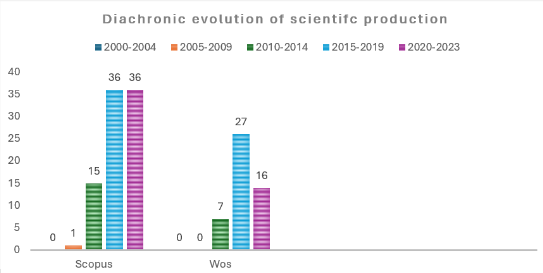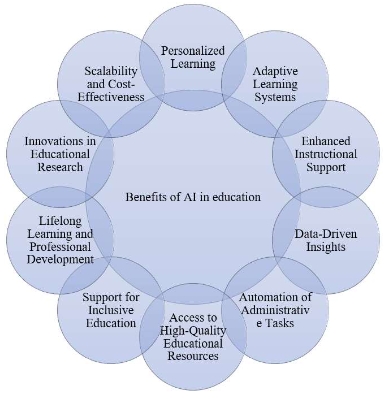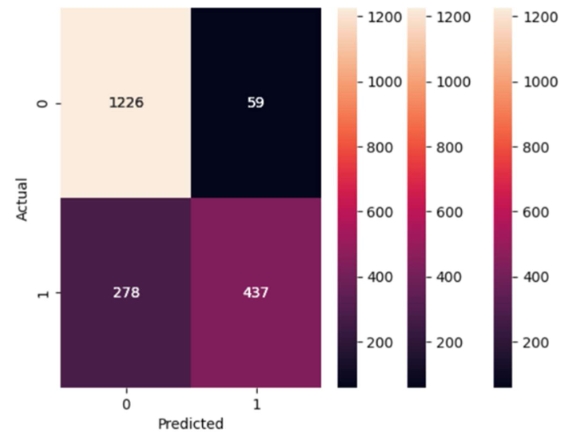Exploring teacher leadership: A study of leadership practices among TESOL professionals in the Arab world
Abstract
This exploratory study delves into the concept of teacher leadership within the Teaching of English to Speakers of Other Languages (TESOL) context in Qatar. It investigates the strategies employed by TESOL professionals to enhance their leadership practices and identifies factors influencing the realization of teacher leadership in this particular setting. Utilizing an interpretive approach, the study employs semi-structured interviews to collect qualitative data from TESOL professionals serving as teacher leaders in five different universities in Qatar. The findings reveal several strategies employed by teacher leaders to enhance their practices, including collaborative team efforts, maintenance of reflective diaries, participation in international conferences, attendance at professional development courses, and volunteering as editors and reviewers. These strategies support teacher leaders in their roles, facilitating on-the-job learning and keeping them abreast of new developments in English Language Teaching (ELT). The study also uncovers various factors that negatively impact teacher leaders’ practices. These include a lack of professional autonomy, the absence of teachers’ voices in the decision-making process, increased workload and accountability, and a lack of trust and support. Inadequate professional development opportunities and lower levels of intrinsic motivation hinder teacher leaders from developing leadership skills, acquiring knowledge, and shaping a strong leadership identity.
References
[1]Stephenson L. Developing Leadership Capacity Through Leadership Learning Opportunities. In: Elsheikh A, Coombe C, Effiong O (editors). The Role of Language Teacher Associations in Professional Development. Springer; 2018. pp. 187-200. doi: 10.1007/978-3-030-00967-0_14
[2]Silva DY, Gimbert B, Nolan J. Sliding the Doors: Locking and Unlocking Possibilities for Teacher Leadership. Teachers College Record: The Voice of Scholarship in Education. 2000; 102(4): 779-804. doi: 10.1177/016146810010200405
[3]York-Barr J, Duke K. What Do We Know About Teacher Leadership? Findings From Two Decades of Scholarship. Review of Educational Research. 2004; 74(3): 255-316. doi: 10.3102/00346543074003255
[4]Shah SRA. Teacher Leadership: A Case Study of Teacher Leaders’ Professional Development in an EFL Institute of a Saudi Arabian University [PhD thesis]. University of Exeter (United Kingdom); 2016.
[5]Sams DA. An Analysis of Leadership Beliefs and Practices of 25 TESOL Leaders [PhD thesis]. Indiana University of Pennsylvania; 2010.
[6]Harris A. Teacher Leadership: More than Just a Feel-Good Factor? Leadership and Policy in Schools. 2005; 4(3): 201-219. doi: 10.1080/15700760500244777
[7]Wenner JA, Campbell T. The Theoretical and Empirical Basis of Teacher Leadership. Review of Educational Research. 2016; 87(1): 134-171. doi: 10.3102/0034654316653478
[8]Bond N. Preparing Preservice Teachers to Become Teacher Leaders. The Educational Forum. 2011; 75(4): 280-297. doi: 10.1080/00131725.2011.602578
[9]Hite R, Milbourne J. A Proposed Conceptual Framework for K–12 STEM Master Teacher (STEMMaTe) Development. Education Sciences. 2018; 8(4): 218. doi: 10.3390/educsci8040218
[10]Katzenmeyer M, Moller G. Awakening the Sleeping Giant: Helping Teachers Develop as Leaders. Corwin Press; 2009.
[11]Öqvist A, Malmström M. Teachers’ leadership: a maker or a breaker of students’ educational motivation. School Leadership & Management. 2016; 36(4): 365-380. doi: 10.1080/13632434.2016.1247039
[12]Smith PS, Hayes ML, Lyons KM. The ecology of instructional teacher leadership. The Journal of Mathematical Behavior. 2017; 46: 267-288. doi: 10.1016/j.jmathb.2016.12.005
[13]Criswell BA, Rushton GT, Nachtigall D, et al. Strengthening the vision: Examining the understanding of a framework for teacher leadership development by experienced science teachers. Science Education. 2018; 102(6): 1265-1287. doi: 10.1002/sce.21472
[14]Inman M. The Journey to Leadership: A Study of How Leader-Academics in Higher Education Learn to Lead. University of Birmingham; 2007.
[15]Stephenson L. Leadership perspectives and influences: A conversation with five leaders in TESOL. Arab World English Journal. 2012; 3(4): 19-35.
[16]Rhodes C, Brundrett M. Growing the leadership talent pool: perceptions of heads, middle leaders and classroom teachers about professional development and leadership succession planning within their own schools. Professional Development in Education. 2009; 35(3): 381-398. doi: 10.1080/19415250902987122
[17]Newsom SK. Narratives of the Development of Urban Teacher Leaders [PhD thesis]. University of Tennessee; 2010.
[18]Stephenson L, Dada R, Harold B. Challenging the traditional idea of leadership in UAE schools. On the Horizon. 2012; 20(1): 54-63. doi: 10.1108/10748121211202071
[19]Sanocki SJ. The Process of How Teachers Become Teacher Leaders and How Teacher Leadership Becomes Distributed within a School: A Grounded Theory Research Study [PhD thesis]. Western Michigan University; 2013.
[20]Higgins C. Understanding Teacher Leadership and Professional Learning in a Secondary Mathematics Department [PhD thesis]. Florida Atlantic University; 2013.
[21]Alexandrou A, Swaffield S, MacBeath J. Scottish Teacher leaders: Two accidental journeys enacting leadership for learning. In: Alexandrou A, Swaffield S (editors). Teacher Leadership and Professional Development. Routledge; 2016. pp. 215-230.
[22]Fairman JC, Mackenzie SV. Spheres of teacher leadership action for learning. In: Alexandrou A, Swaffield S (editors). Teacher Leadership and Professional Development. Routledge; 2016. pp. 68-85.
[23]Smith CG. The Experience of Becoming a Teacher Leader [PhD thesis]. Utah State University; 2021.
[24]Stephenson L. Developing leadership capacity in English language teaching. In: Coombe C, Anderson NJ, Stephenson L (editors). Professionalizing Your English Language Teaching. Springer; 2020. pp. 197-206. doi: 10.1007/978-3-030-34762-8_16
[25]DuFour R. What is a professional learning community? Educational Leadership. 2004; 61(8), 6–11.
[26]Preskill S, Brookfield SD. Learning as a Way of Leading: Lessons from the Struggle for Social Justice. John Wiley & Sons; 2008.
[27]Lave J, Wenger E. Situated Learning: Legitimate Peripheral Participation. Cambridge University Press; 1991.
[28]Vygotsky LS. Mind in Society: The Development of Higher Mental Processes. Harvard University Press; 1978.
[29]Kolb DA. Experiential Learning: Experience as the Source of Learning and Development. FT Press; 2014.
[30]Dewey J. A Restatement of the Relation of Reflective Thinking to the Educative Process. DC Heath; 1933.
[31]Schön DA. The Reflective Practitioner: How Professionals Think in Action. Routledge; 2017.
[32]Wallace MJ. Training Foreign Language Teachers: A Reflective Approach. Cambridge University Press; 1991.
[33]Murphy J. Teacher leadership: Barriers and supports. In: Townsend T (editor). International Handbook of School Effectiveness and Improvement. Springer; 2007. pp. 681-706. doi: 10.1007/978-1-4020-5747-2_37
[34]Tschannen-Moran M. Fostering Teacher Professionalism in Schools. Educational Administration Quarterly. 2009; 45(2): 217-247. doi: 10.1177/0013161x08330501
[35]Muijs D, Harris A. Teacher leadership: Principles and practice. Available online: https://citeseerx.ist.psu.edu/document?repid=rep1&type=pdf&doi=59ebdd2cf1b784e79e185be17471c722bca9984d (accessed on 5 February 2024).
[36]Cranston NC. Teachers as Leaders: A critical agenda for the new millennium. Asia-Pacific Journal of Teacher Education. 2000; 28(2): 123-131. doi: 10.1080/713650688
[37]Zydziunaite V, Kontrimiene S, Ponomarenko T, Kaminskiene L. Challenges in Teacher Leadership: Workload, Time Allocation, and Self-Esteem. European Journal of Contemporary Education. 2020; 9(4). doi: 10.13187/ejced.2020.4.948
[38]Smith ML. Publishing Qualitative Research. American Educational Research Journal. 1987; 24(2): 173-183. doi: 10.3102/00028312024002173
[39]Marshall C, Rossman GB. Designing Qualitative Research. Sage Publications; 2014.
[40]Kvale S, Brinkmann S. Interviews: Learning the Craft of Qualitative Research Interviewing. Sage Publications; 2009.
[41]Creswell JW, Poth CN. Qualitative Inquiry and Research Design: Choosing Among Five Approaches. Sage Publications; 2016.
[42]Saldaña J. The Coding Manual for Qualitative Researchers. Sage Publications; 2021.
[43]Hunzicker J. Attitude has a lot to do with it: dispositions of emerging teacher leadership. Teacher Development. 2013; 17(4): 538-561. doi: 10.1080/13664530.2013.849614
[44]Hunzicker J. Professional development and job-embedded collaboration: how teachers learn to exercise leadership. Professional Development in Education. 2012; 38(2): 267-289. doi: 10.1080/19415257.2012.657870
Copyright (c) 2024 Sayyed Rashid Ali Shah, Hamid Ali Khan Eusafzai

This work is licensed under a Creative Commons Attribution 4.0 International License.









